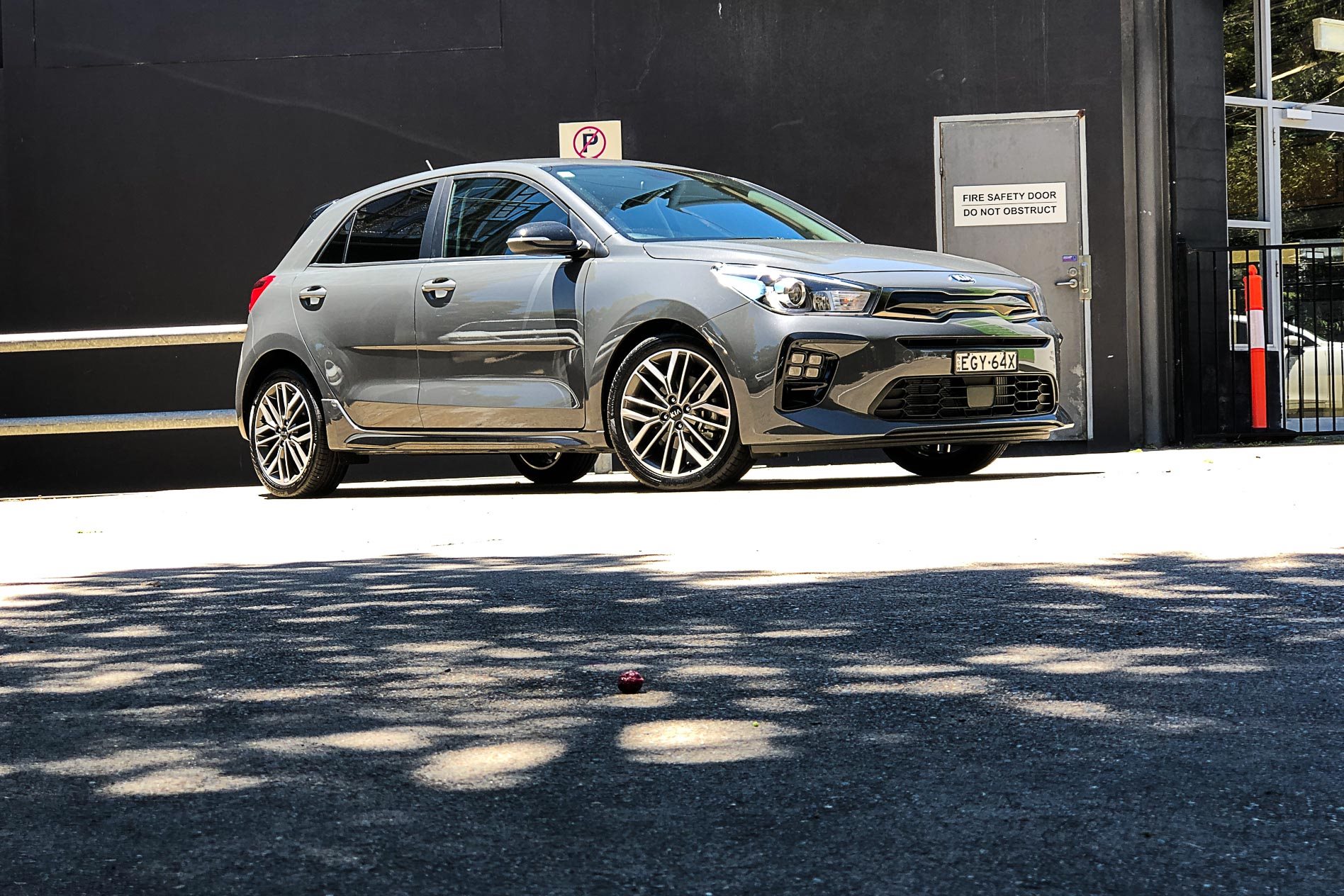
What is the 2021 Kia Rio?
It’s one of the longest-serving nameplates on the Kia roster, and despite its competitors abandoning the field around it, the Kia Rio moves into 2021 with a spring in its step.
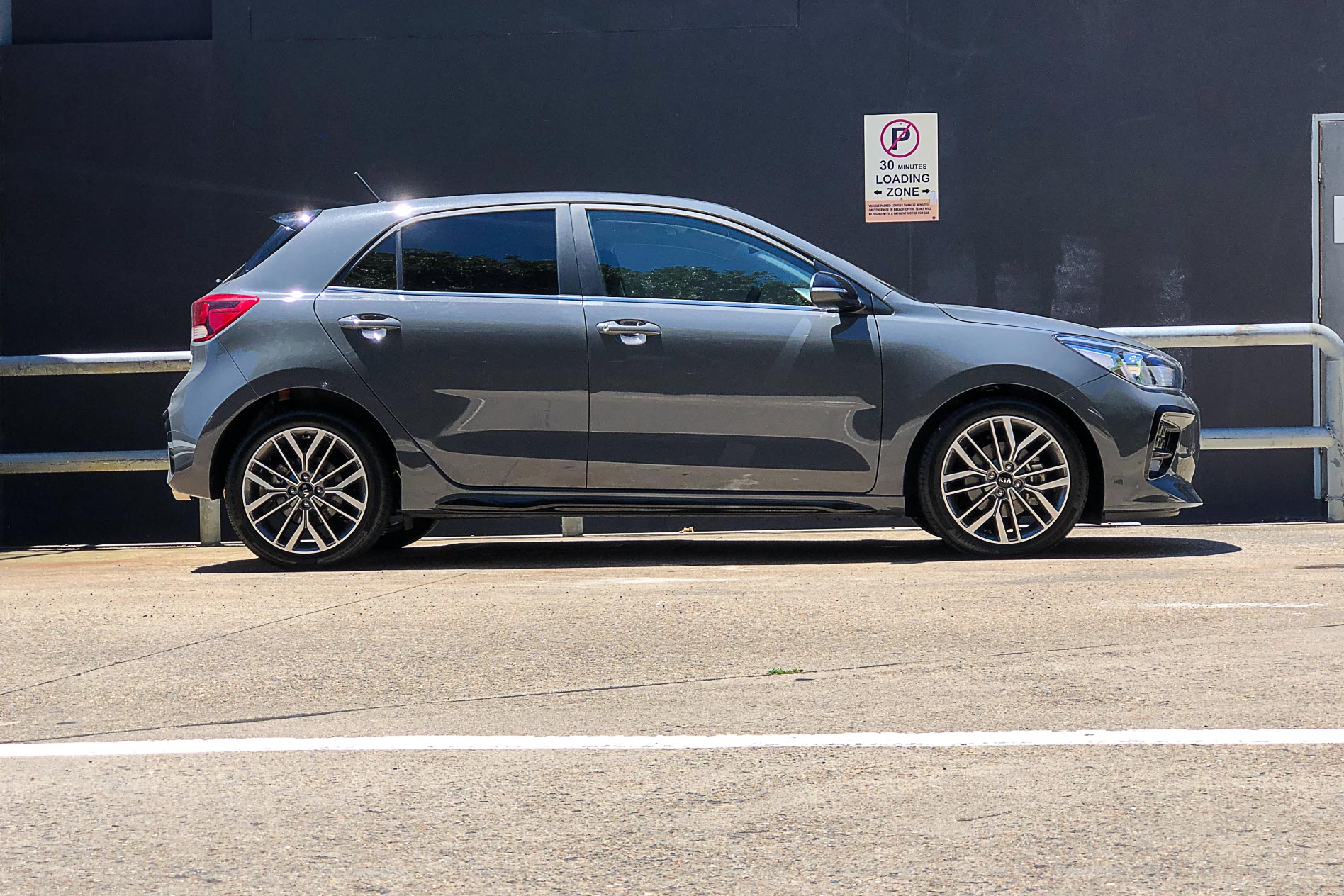
The fourth-generation Rio launched in 2017, with Kia giving the five-door, five-seat compact hatchback a light going-over late in 2020.
More safety and a revised visage were the main issues addressed in the mid-life facelift.
This is the top-spec GT-Line, which will set you back $24,900 drive-away as of January 2021.
For that, you get a conservative yet handsome compact five-seat hatchback with plenty of safety inclusions and a high-tech three-cylinder engine package – but all isn’t perfect.
Price and Value
Kia has made a success of staying the course in vehicle categories where other brands have found it too hard to persevere.
And when you’re competing against a diminished field, it’s easier to draw in those buyers who previously shopped with the other brands.
The diminutive Rio slots above the tiny Picanto and under the Cerato in Kia’s hatch line-up; it’s a tightly packed line-up, sure, but for short-haul urban work, you’d lean towards the Rio for most tasks.
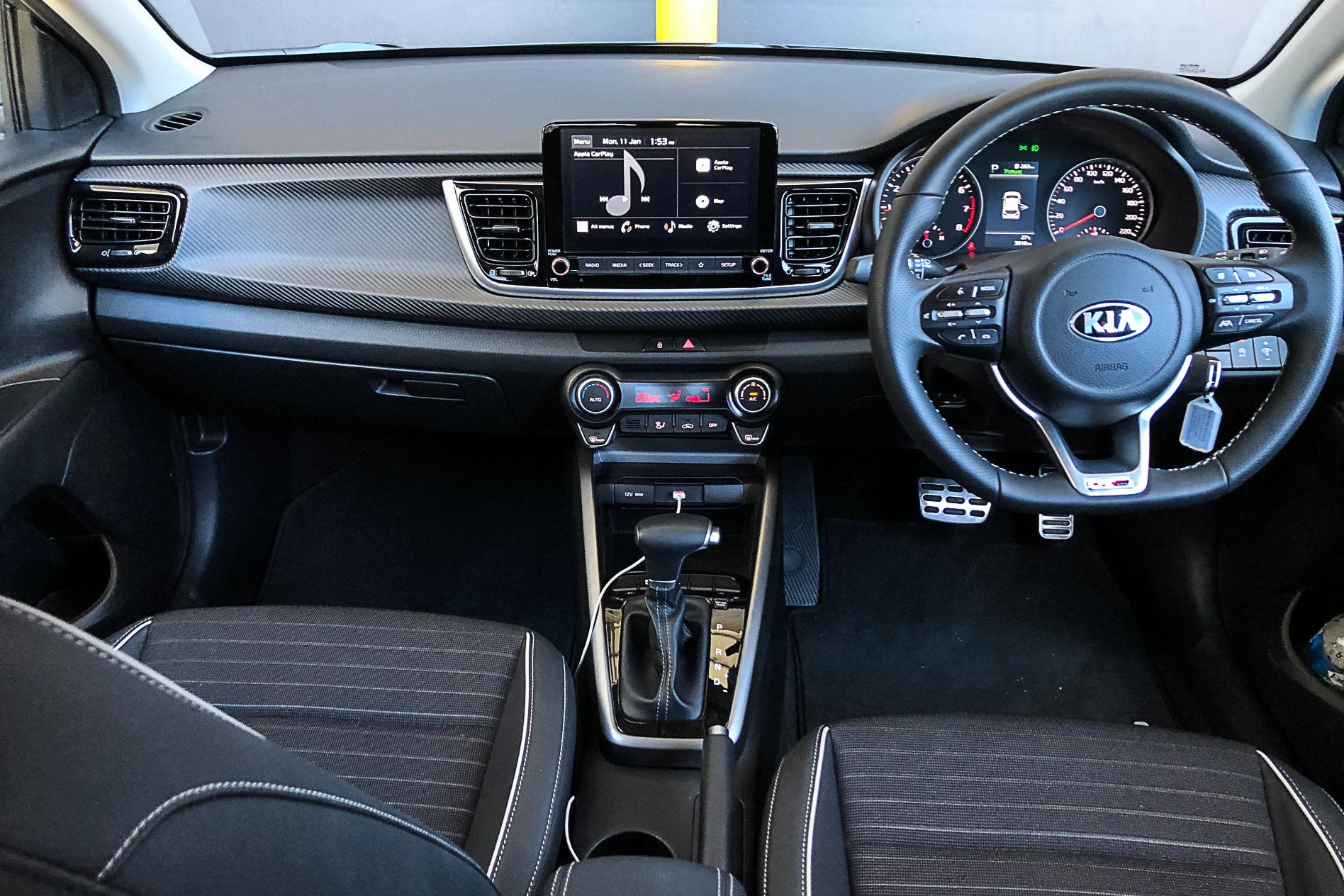
At $24,990 drive-away, it’s well equipped for the money, too; upgraded climate control, decently sized multimedia screen with wireless Apple CarPlay and wired Android Auto, comfy cloth-covered seats and three USB charge points fore and aft.
You’ll get automatic headlights and auto wipers, and the manually-operated climate control system will automatically defog the windows for you.
The driver’s seat gets six-direction adjustment, as well.
Living with the Kia Rio
If you like your cars fuss-free, then you’ll love the Rio. It uses a regular key to start it, has a T-bar auto shifter, has the indicators on the right side of the steering column… in short, it’s a very traditional car when it comes to its general operation.
The large centre-mounted multimedia screen is a nod to the modern world, though it too is very simple to use.
Our tester did continually throw my Apple CarPlay connection off, though, which was annoying and unusual. I suspect a glitch in the matrix between the wired and wireless Apple connections was the culprit.
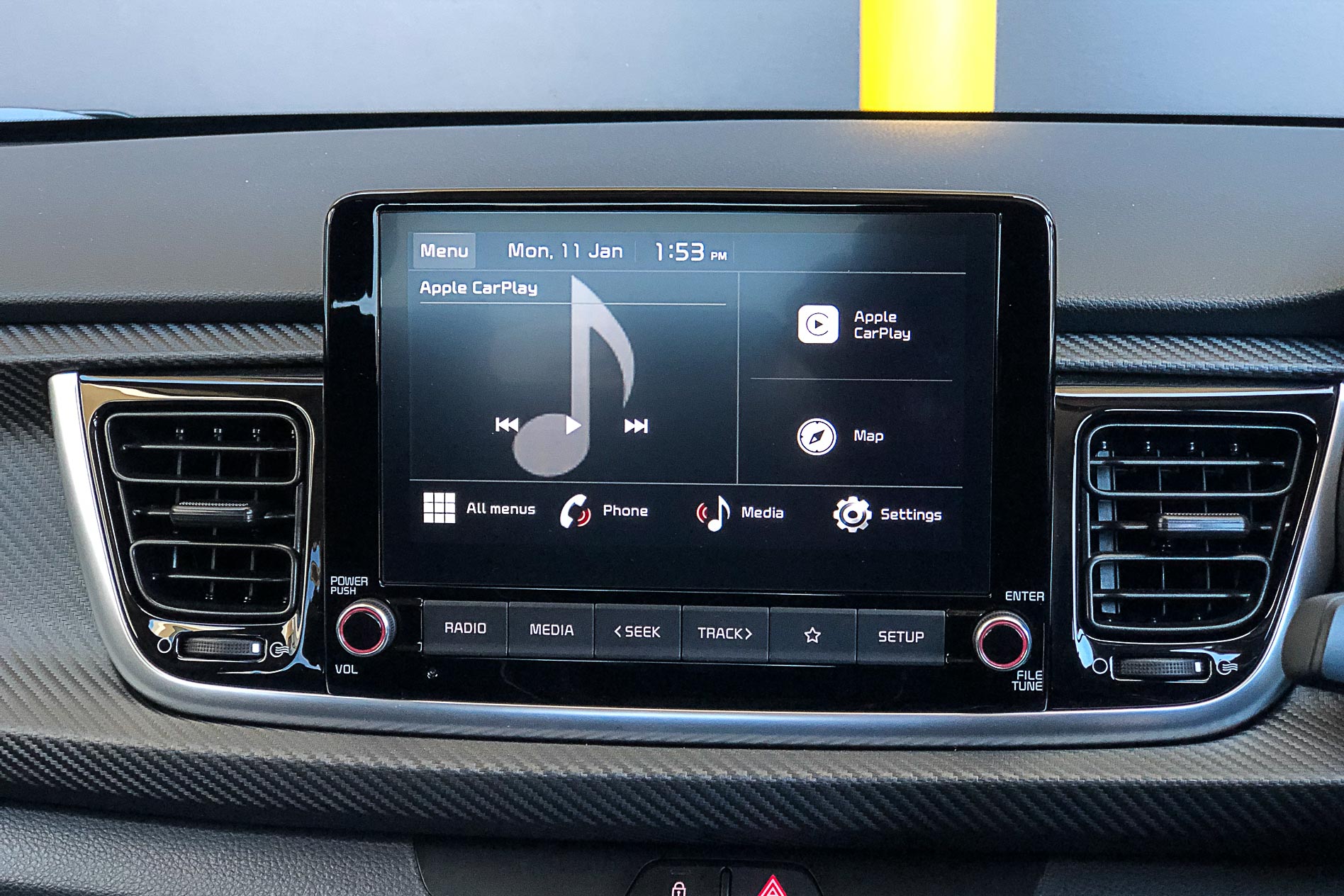
Despite its small size, the Rio’s front seats are plenty roomy for normal-sized humans, with decent head and shoulder room up front.
Rear seat passengers are also surprisingly well catered for, though knee room for taller rear seaters is compromised unless the front seater is willing to compromise.
It’ll take two ISOFIX baby seats on the outermost seats, but being a regular-sized hatch means you’re stooping a bit to bolt the kids in. And forget about getting three baby seats across the rear bench – it’s just not going to happen.
The GT-Line offers more in the way of connectivity for second-rowers than the entry-level Rios – though don’t forget this is a twenty-five grand car, so there are compromises to endure when it comes to features.
Accessing the cargo area is simple enough, as is dropping the 60/40 split-fold seats to liberate more room; there is a decent 325 litres of well-shaped space behind the rear seats, and 980 litres with the seats folded.

That boot room, though, means you have to live with a space-saver spare wheel beneath the boot floor.
Engine, transmission, drivetrain
The GT-Line is the only Rio that uses Kia’s one-litre, three-cylinder turbocharged petrol engine, which sends its power to the front wheels via a seven-speed dual-clutch transmission.
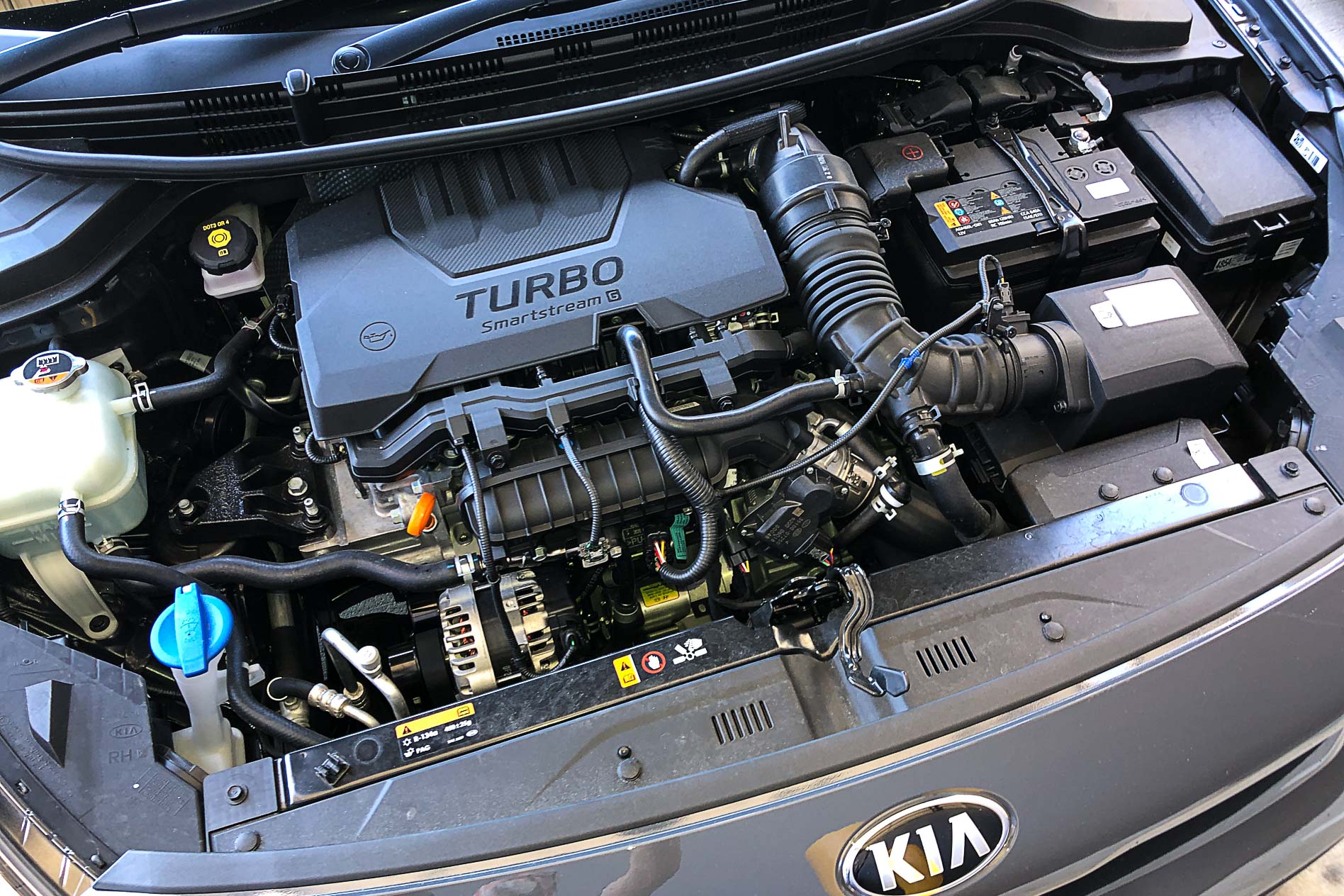
Its outputs of 74kW and 172Nm are modest, but then so is the Rio’s 1197kg claimed tare weight.
A big tick in the Rio’s favour is that it’s fine with regular unleaded petrol; many turbocharged engines need premium unleaded as a minimum.
Driving the Kia Rio
Over the last decade, Kia has taken it upon itself to recalibrate the ride and handling of every car it takes from HQ to make it a better fit for Australian conditions, and the Rio is no different.
However, I reckon the company has done itself a rare disservice to the standard car in this case, and it’s the one area where the Rio GT-Line lets itself down.
Put simply, the suspension springs feel far too firm at slow speeds over bumps typical of an urban environment.
Sharp-edged potholes and ledges aren’t absorbed by the springs, causing the impact to jar through the steering and the body of the Rio.
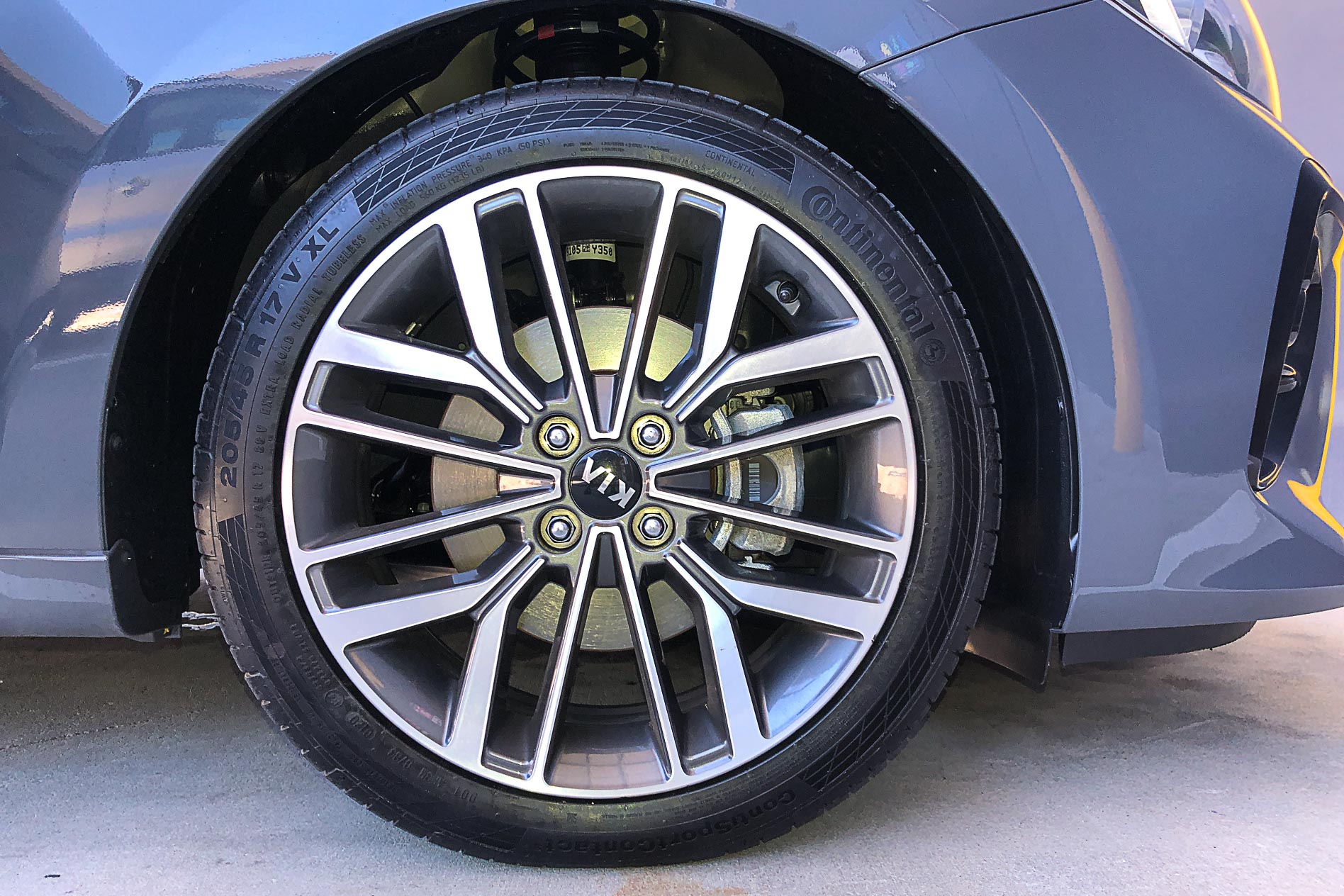
The ride comfort improves as speeds increase, which tells me that the shocks work very well at higher velocities, but it’s the low-speed ride that lets the side down.
Conversely, those firm springs mean that the body roll is well controlled, and steering feel is also very precise and comfortable… but that primary ride, that first bump, is just a bit too severe.
Put it this way; your parent/partner will definitely glare at you from the passenger seat.
The three-cylinder engine does a good job at propelling the Rio around, though it’s a little more coarse and raw than a four-cylinder engine.
The dual-clutch gearbox is well-matched to the engine’s powerband, though, and performs every bit as predictably as a traditional automatic transmission.
Long ascents will drop the gearbox a cog, but the Rio can hold its own up hills, despite its diminutive size.
Noise getting back into the cabin is obvious but not overbearing, particularly for a car of the Rio’s size, and it’s as comfortable at 110km/h as it is at 70km/h.
Safety
There’s a decent smattering of electronic safety help aboard the ANCAP five-star Rio; lane-keep and lane-follow assist, AEB, rearview camera with sensors and bending halogen headlights are all included as standard and complement the six airbags.
The GT-Line also gains forward collision warning and driver attention alert, where driver steering inputs are monitored with cameras and sensors, and an audio/visual warning issued if careless driving is detected.
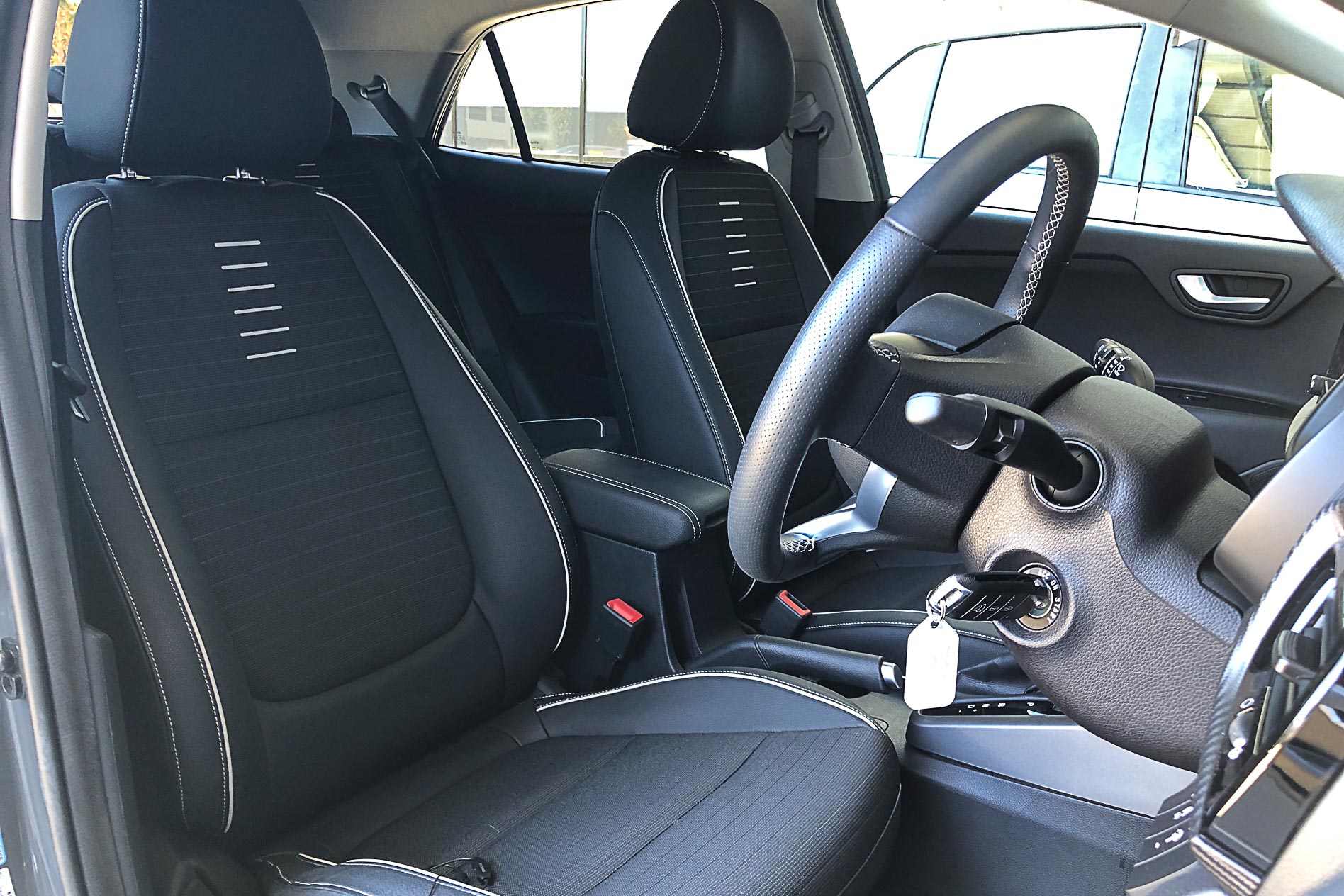
High-beam assist and rear belt activation detection is also included, though because the Rio is an older model, it predates 2020 Euro NCAP requirements for front passenger collision that would require a front-centre airbag.
How much does it cost to run the Kia Rio?
Having the smallest engine in the Rio line-up also means the GT-Line is the most frugal, posting a claimed combined fuel economy figure of 5.3L/100km. Over 280km, I posted 5.8L/100km.
With a 45-litre tank on board, that gives a best-case range of almost 850km to a single tank.
A fixed-price service plan is offered over the Rio’s seven-year warranty period, and totals $3299; you’ll need to visit your dealer every 12 months or 20,000km.
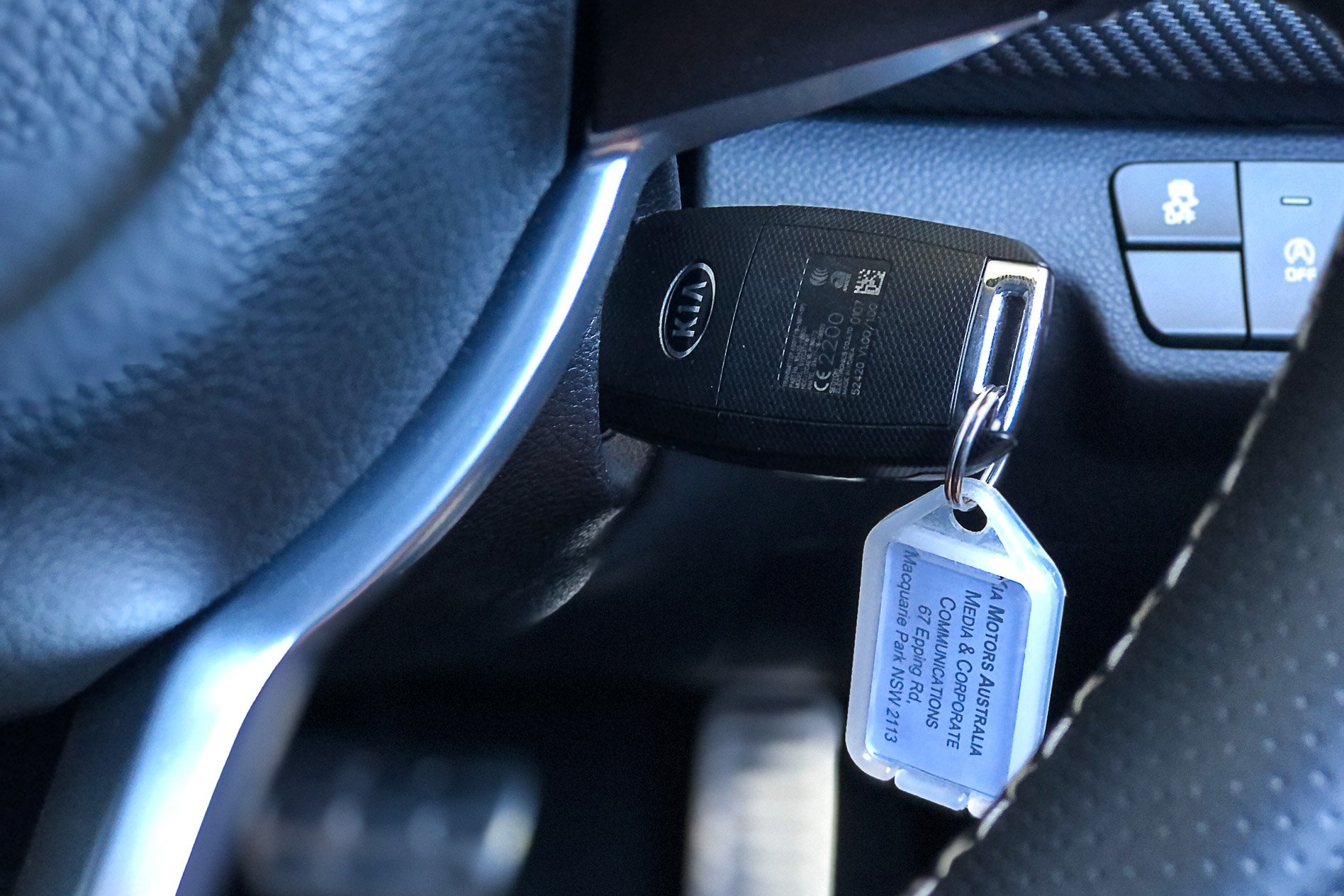
The four-year/40,000km service is the dearest of them all at a shade over $700.
You’re also eligible for a year’s free roadside assistance when you buy your new Rio, which is renewed for free for another year (up to eight years) if serviced with a Kia dealer.
Verdict
When it comes to value for money, long warranty and low-cost motoring, the Kia Rio is a great proposition.
In GT-Line guise, though, it’s a case of ‘try that low-speed ride before you buy’.
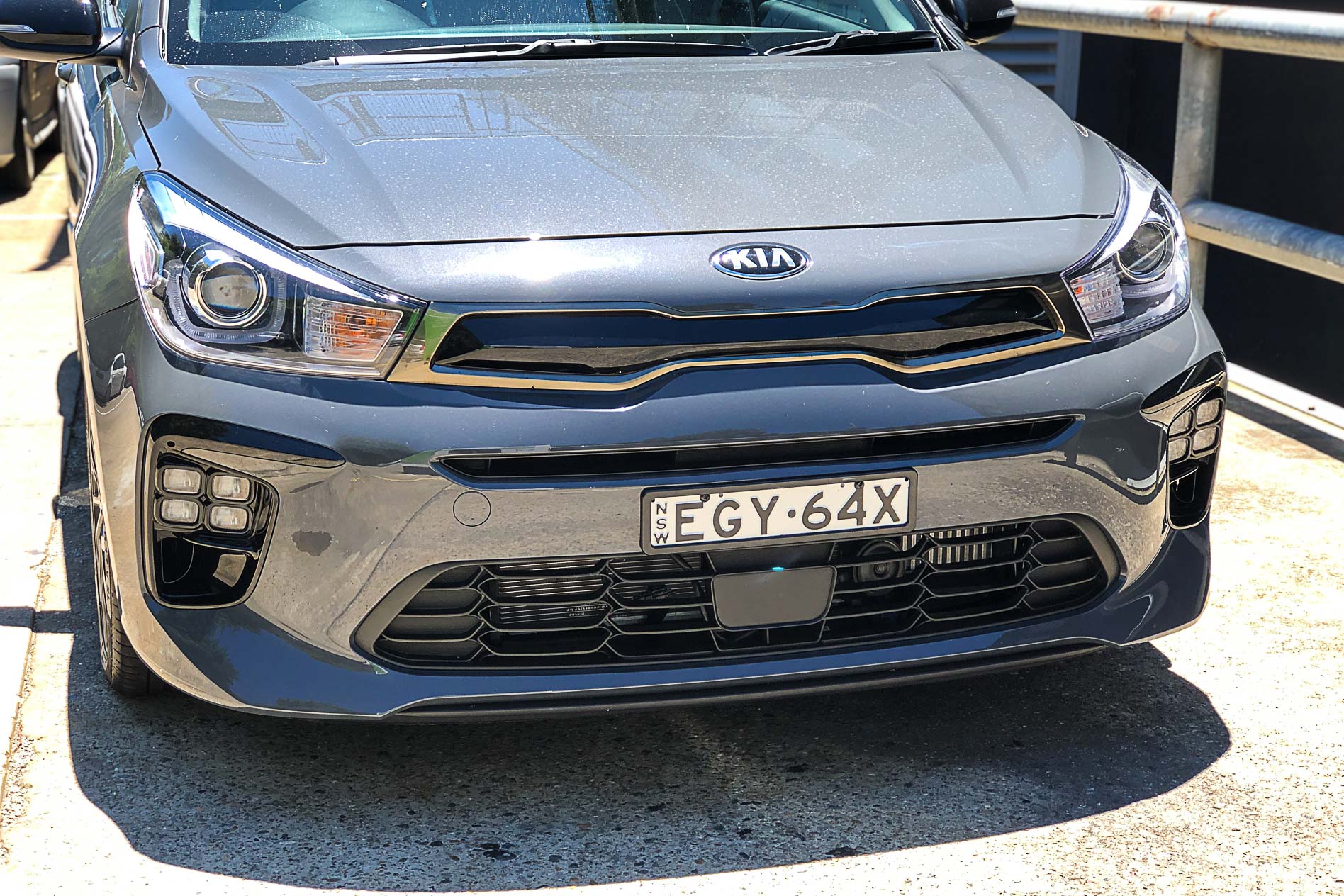
I’m old and fussy, but I reckon there’s a way to give the little Rio a bit of ride quality back, at the expense of some of the sharpness of the current offering.
However, you may think it’s well suited to the sporting nature of this top-spec Rio, in which case you’ll be as happy as a clam.
Overall Rating
3.5/5 stars
Plus & Minus
Plus Stacks of value, great looks, honest and simple
Minus Ride and handling are VERY sporty in nature
Model Kia Rio GT-Line
Engine 998cc 3cyl, dohc, 12v turbo
Max power 74kW @ 4500-6500rpm
Max torque 172Nm @ 1500-4500rpm
Transmission 7-speed dual-clutch auto
Weight 1197kg
Economy 5.3L/100km
Price $24,990
On sale Now



